八君子 “Eight Kunshi” -Blue Flower Rebellion-
- Others
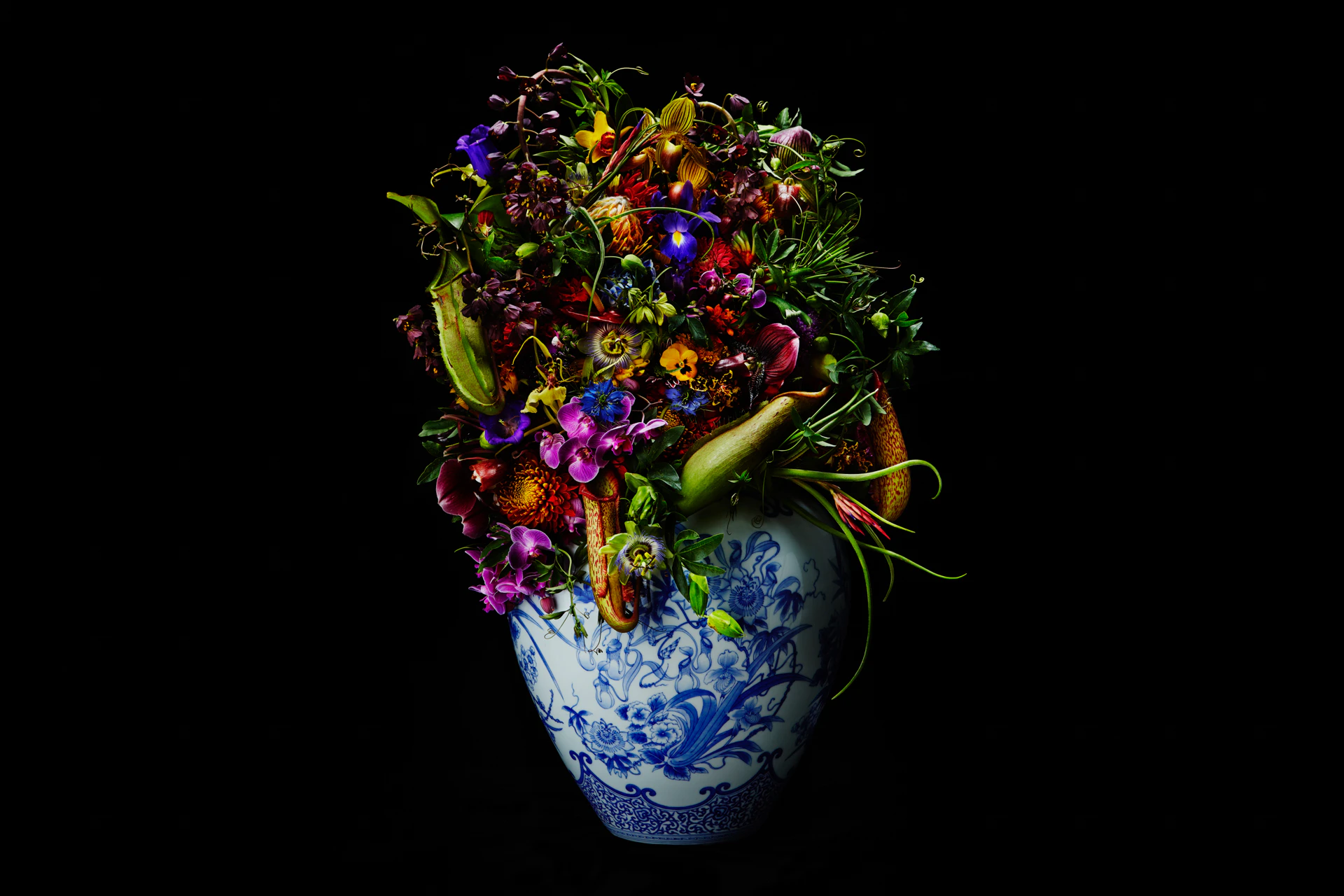
- Size:
- H 390 x Dia 360(mm)

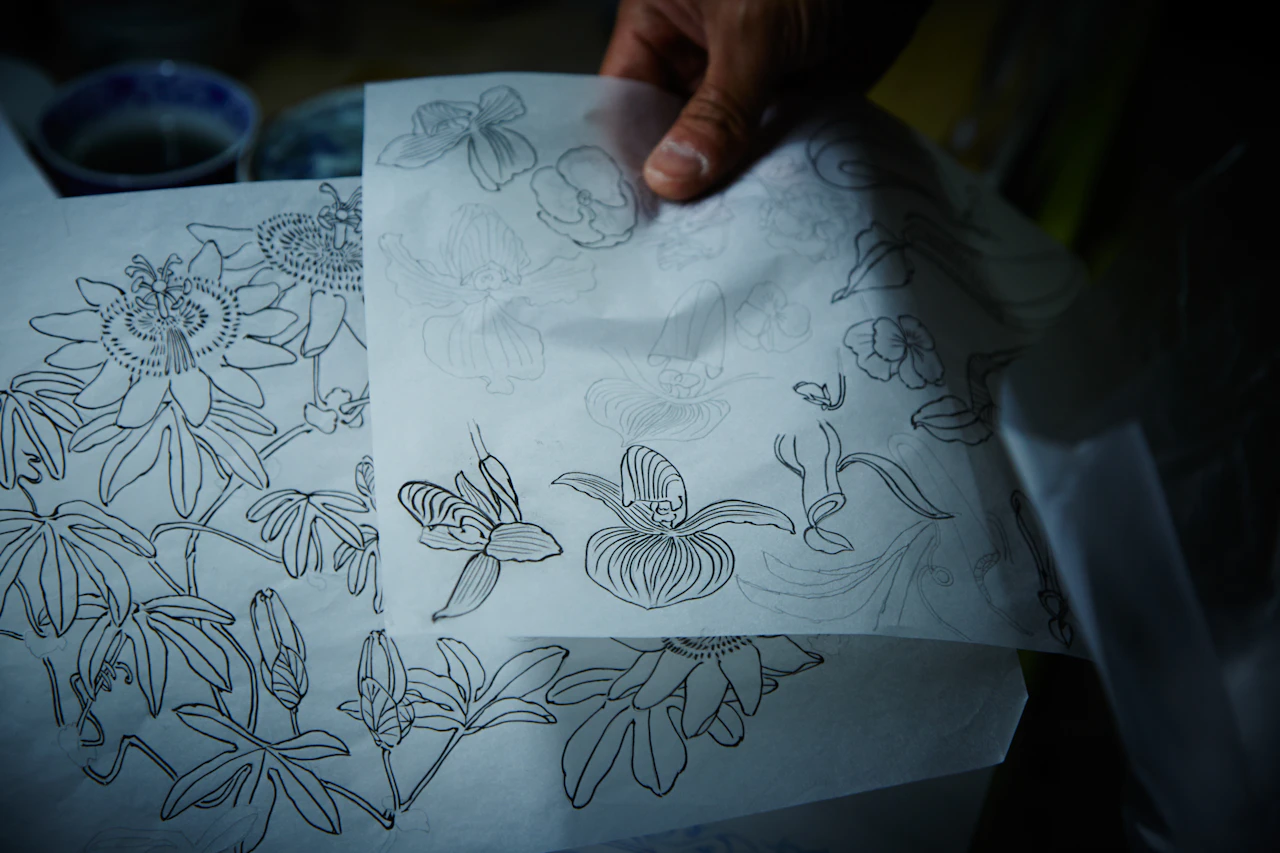

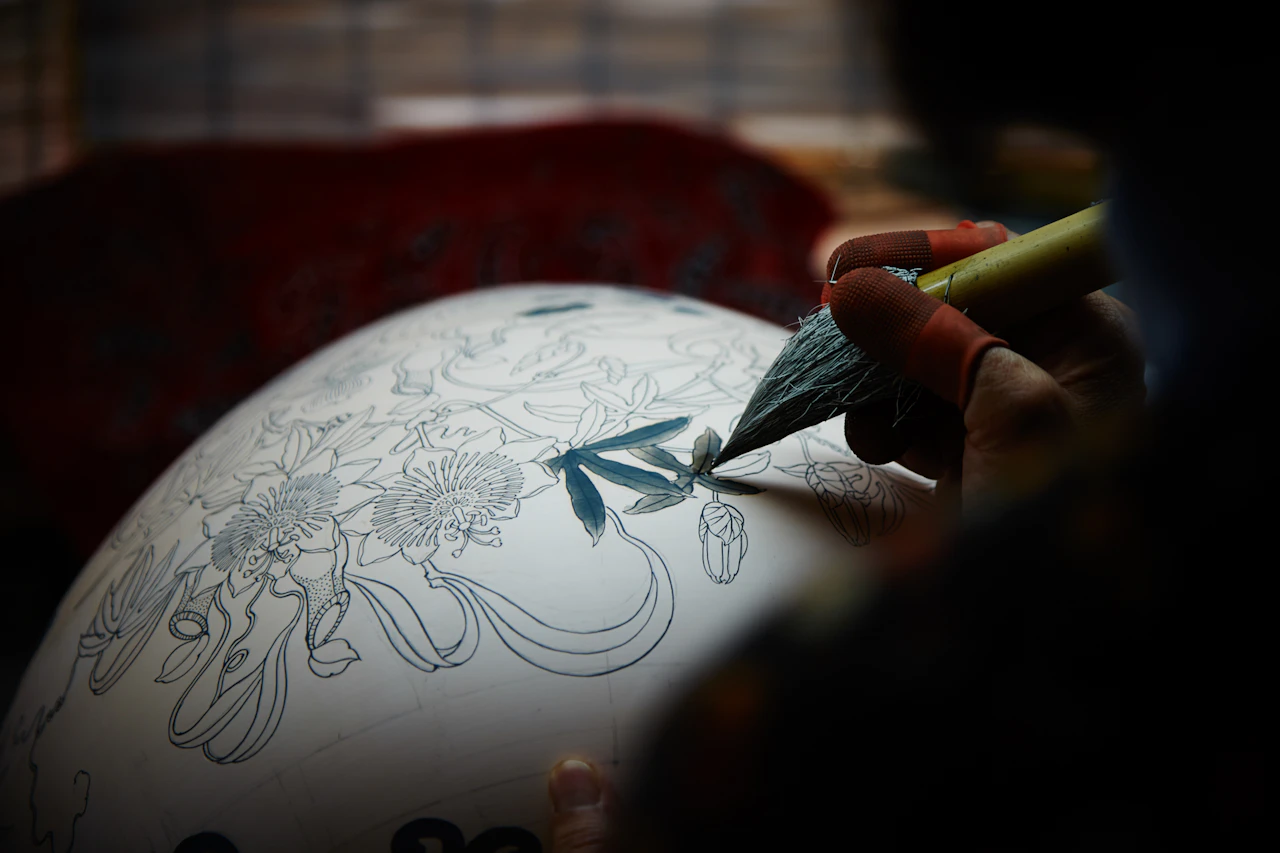
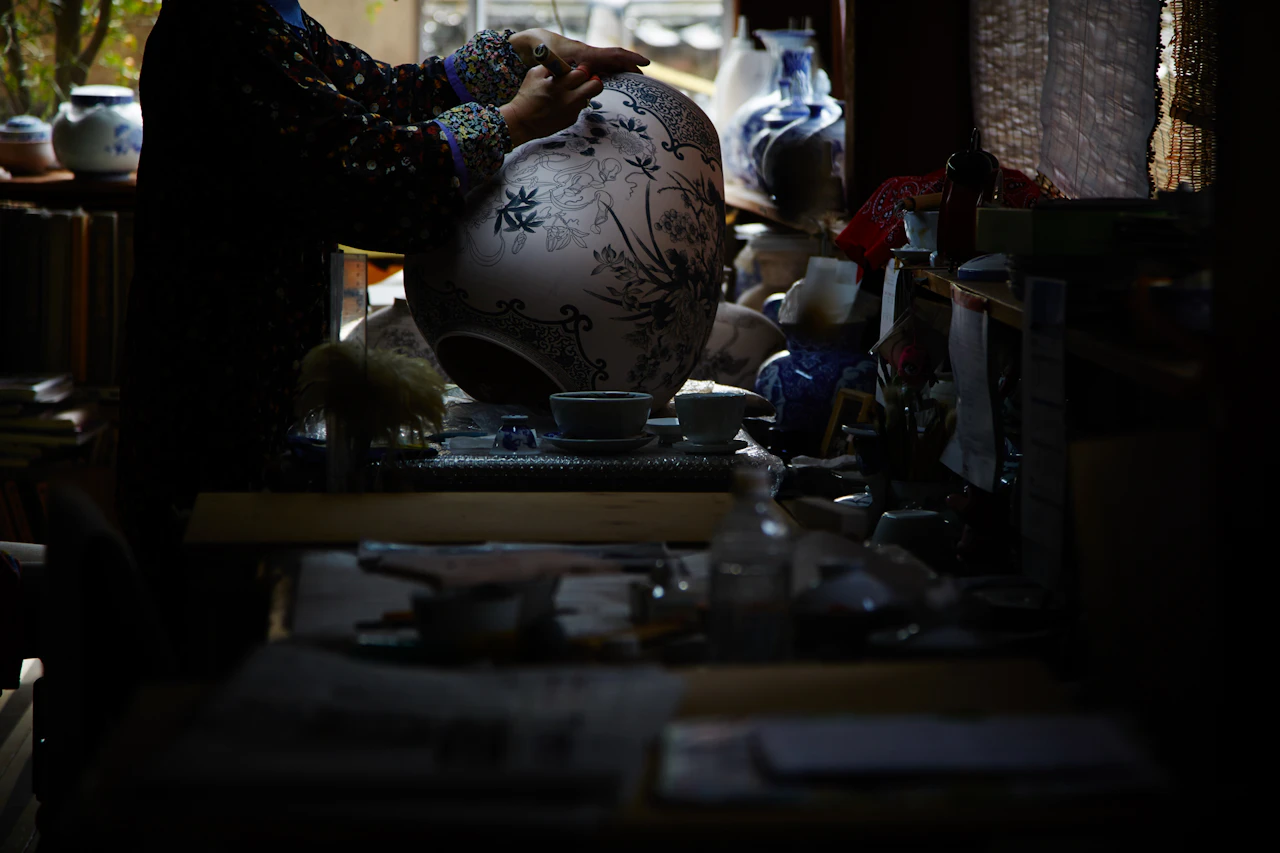
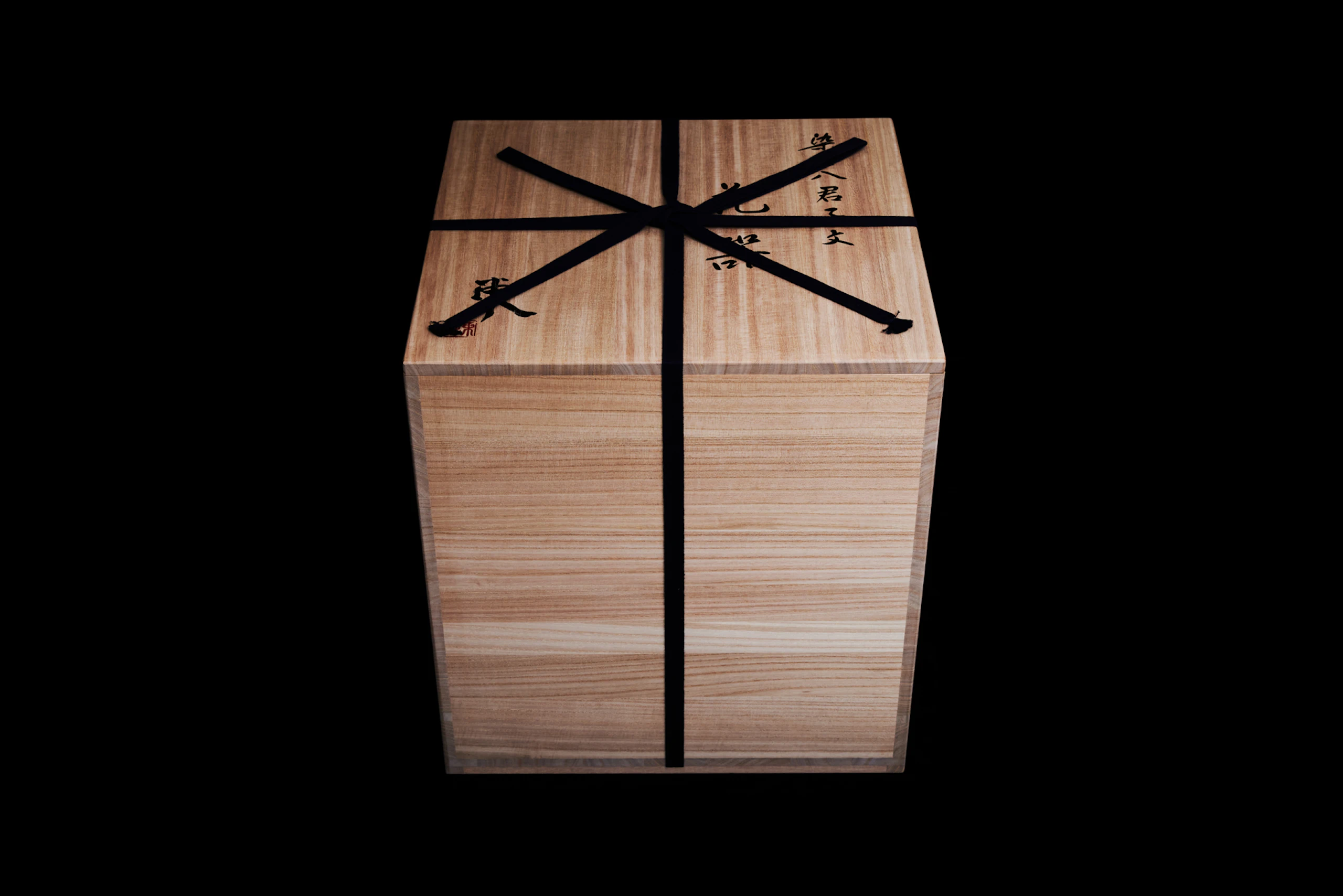
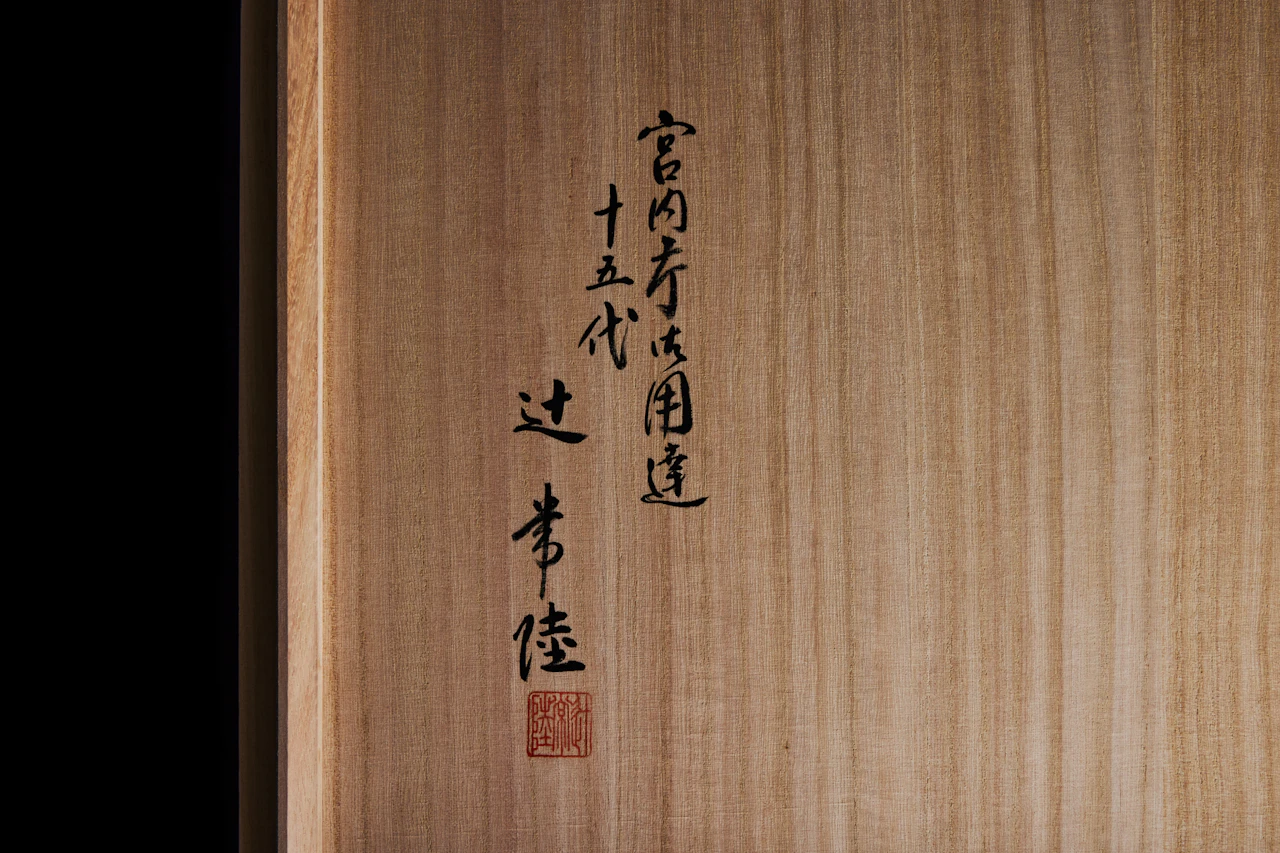
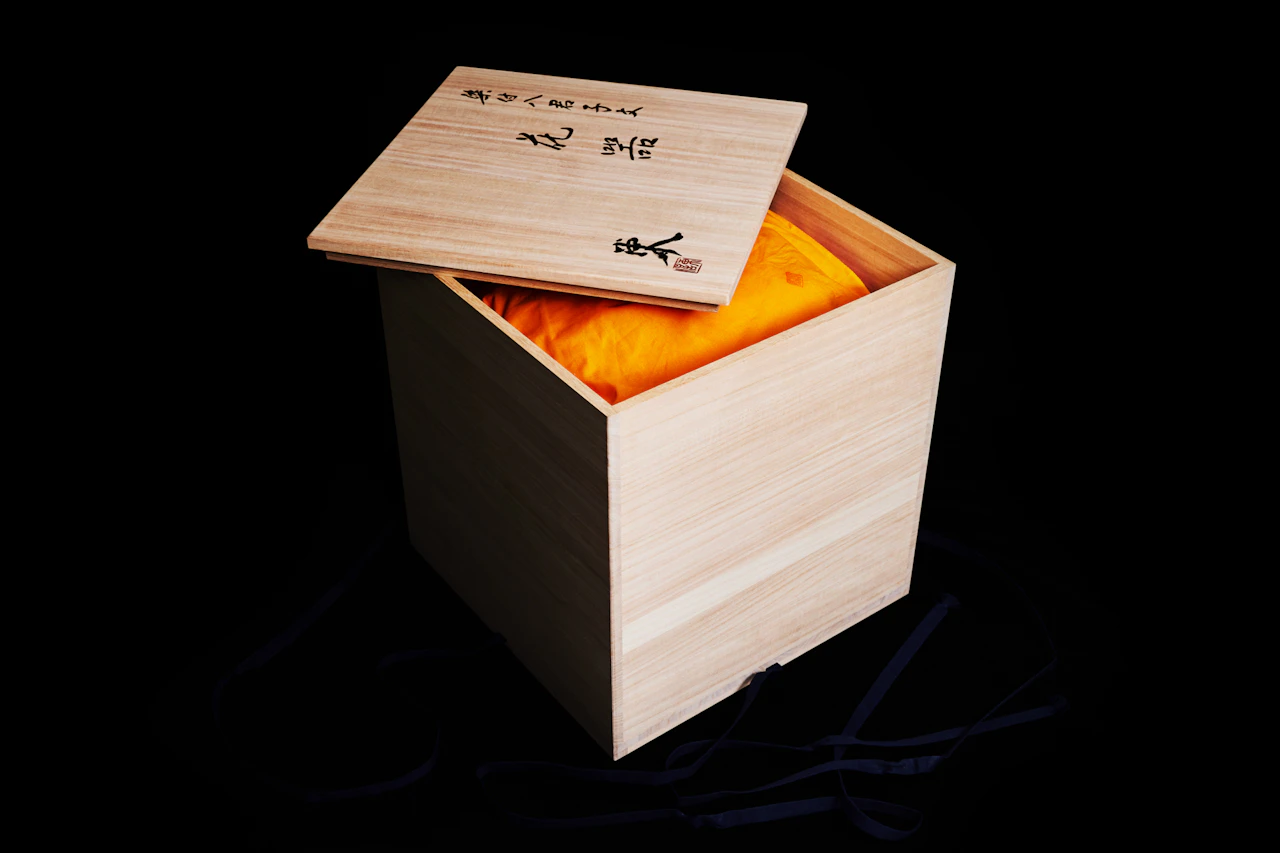
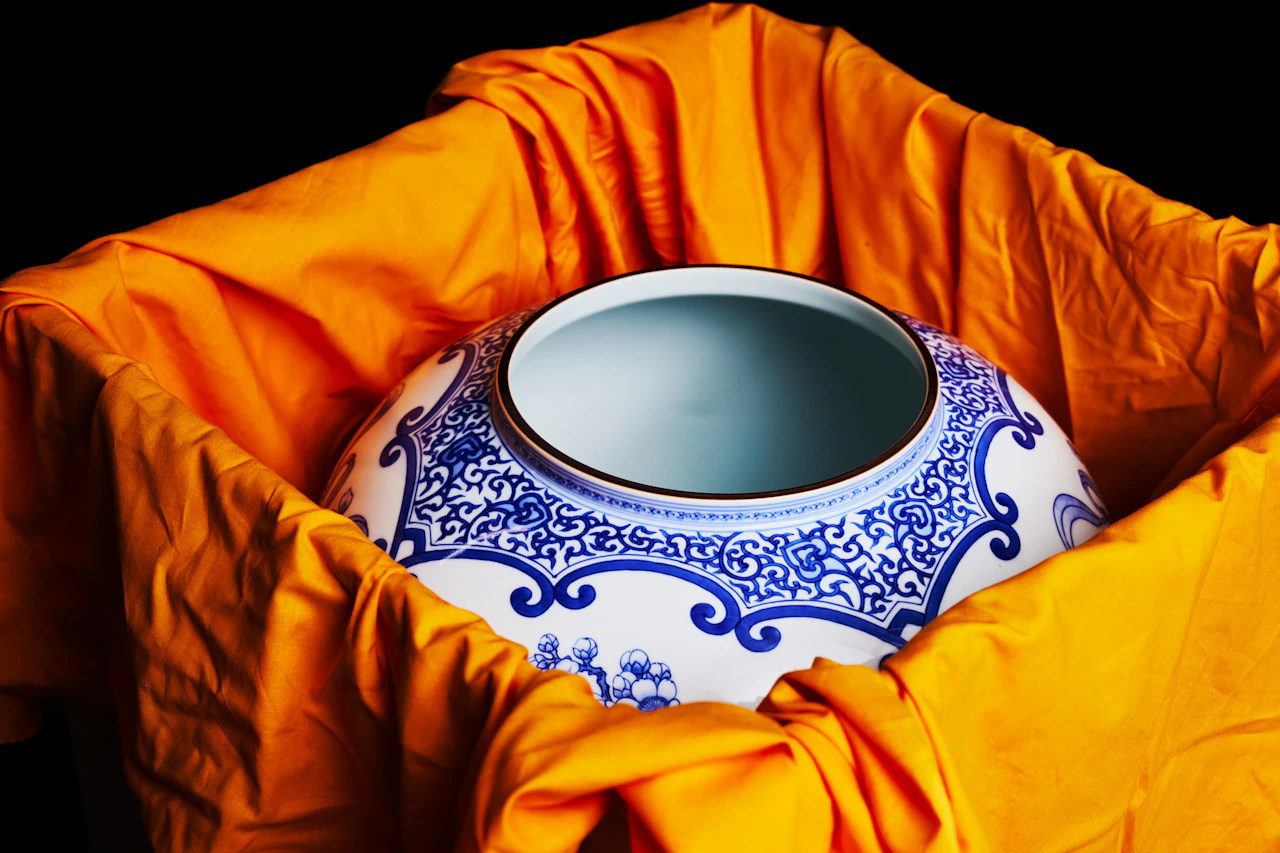
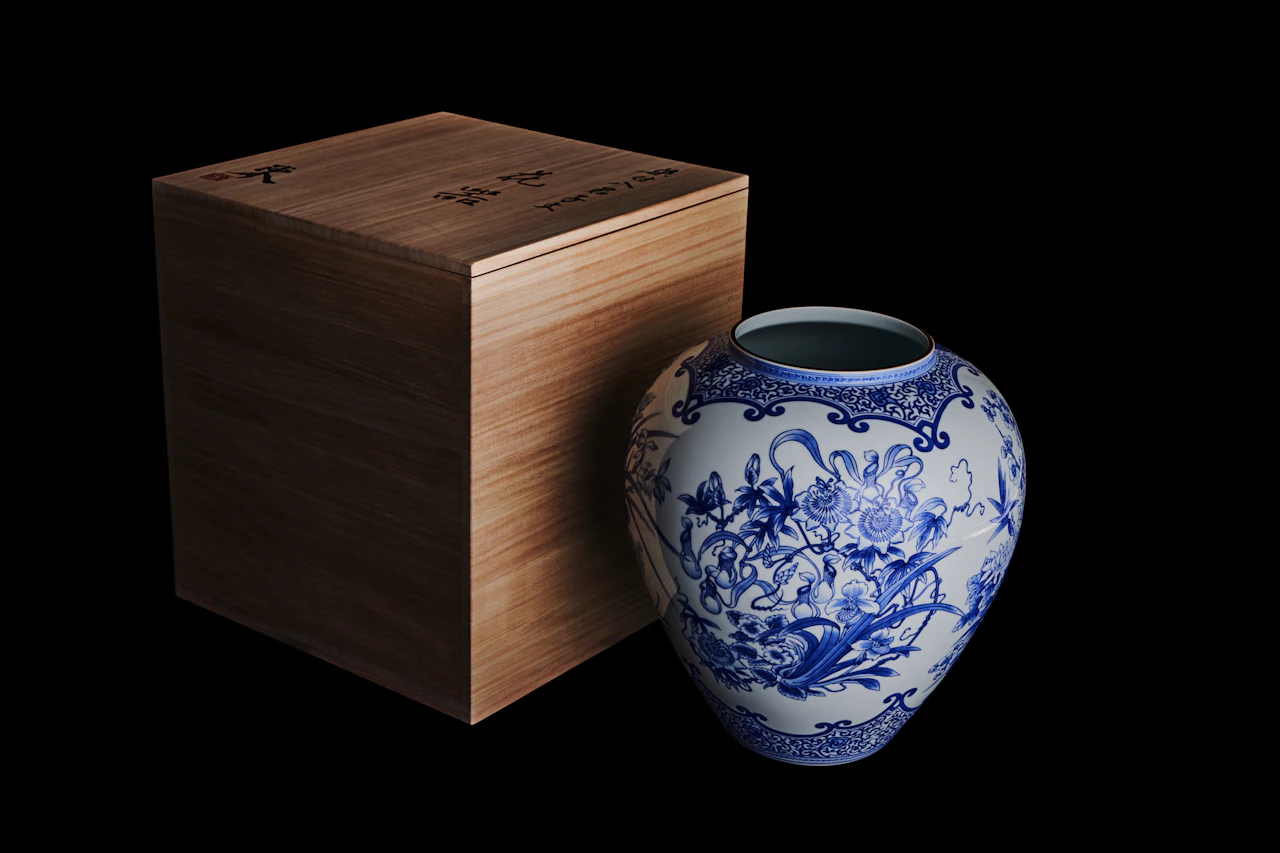
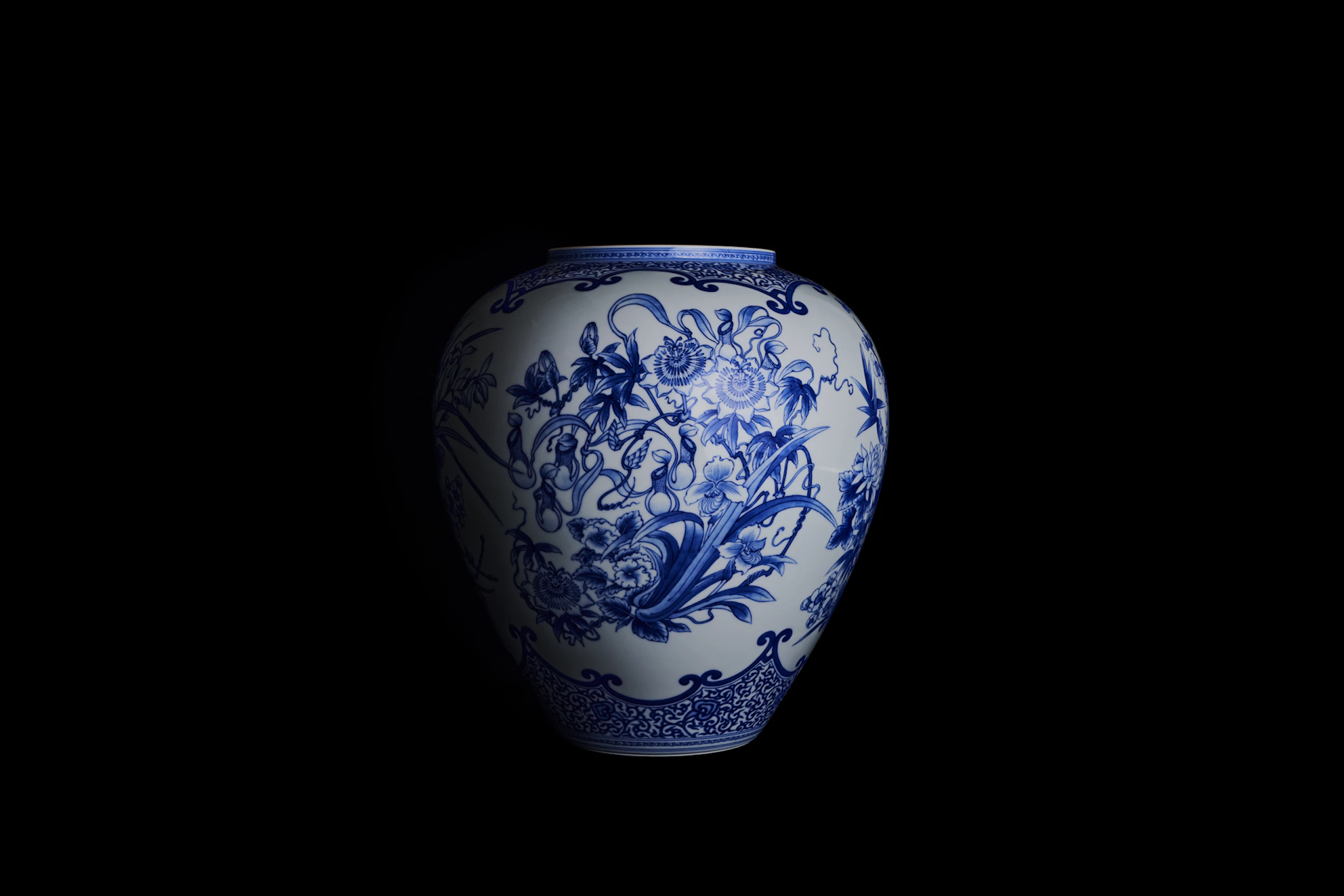
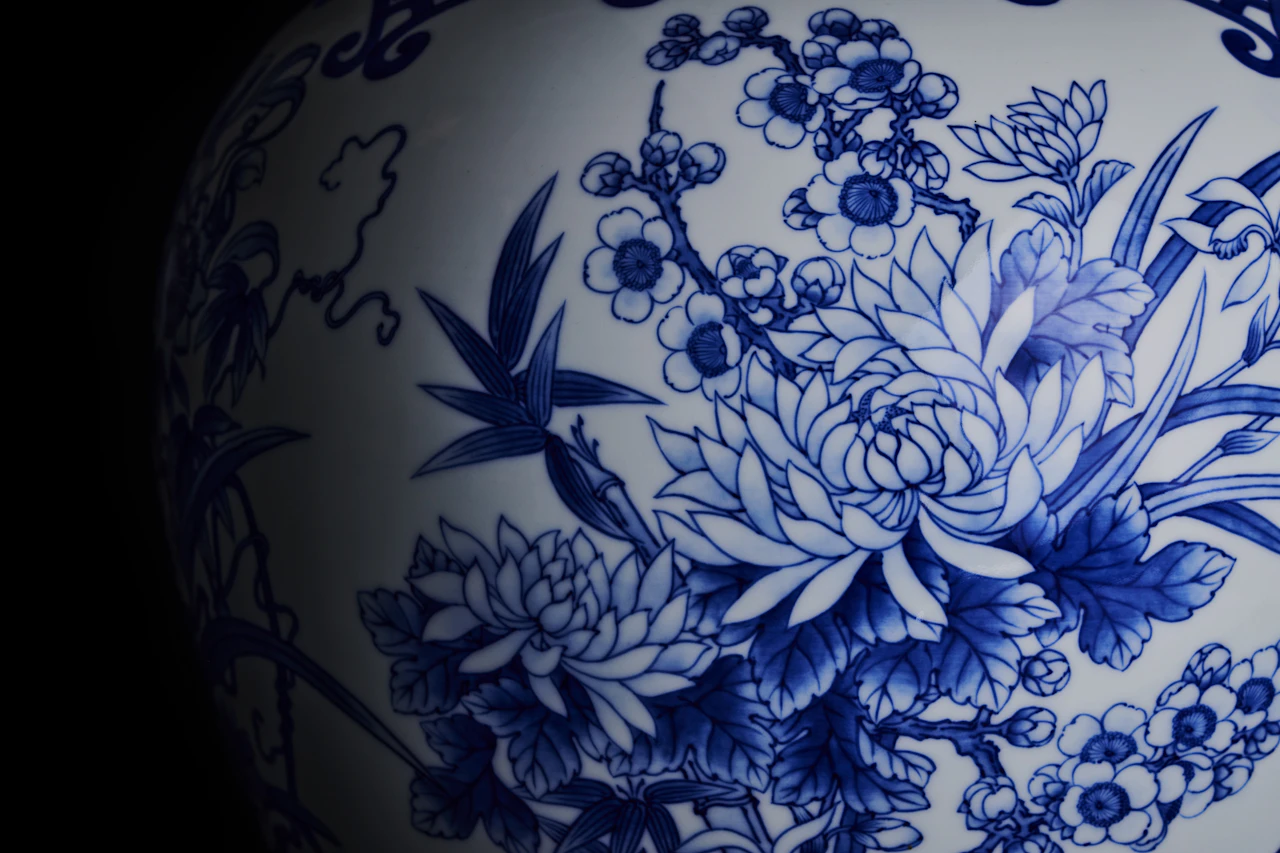
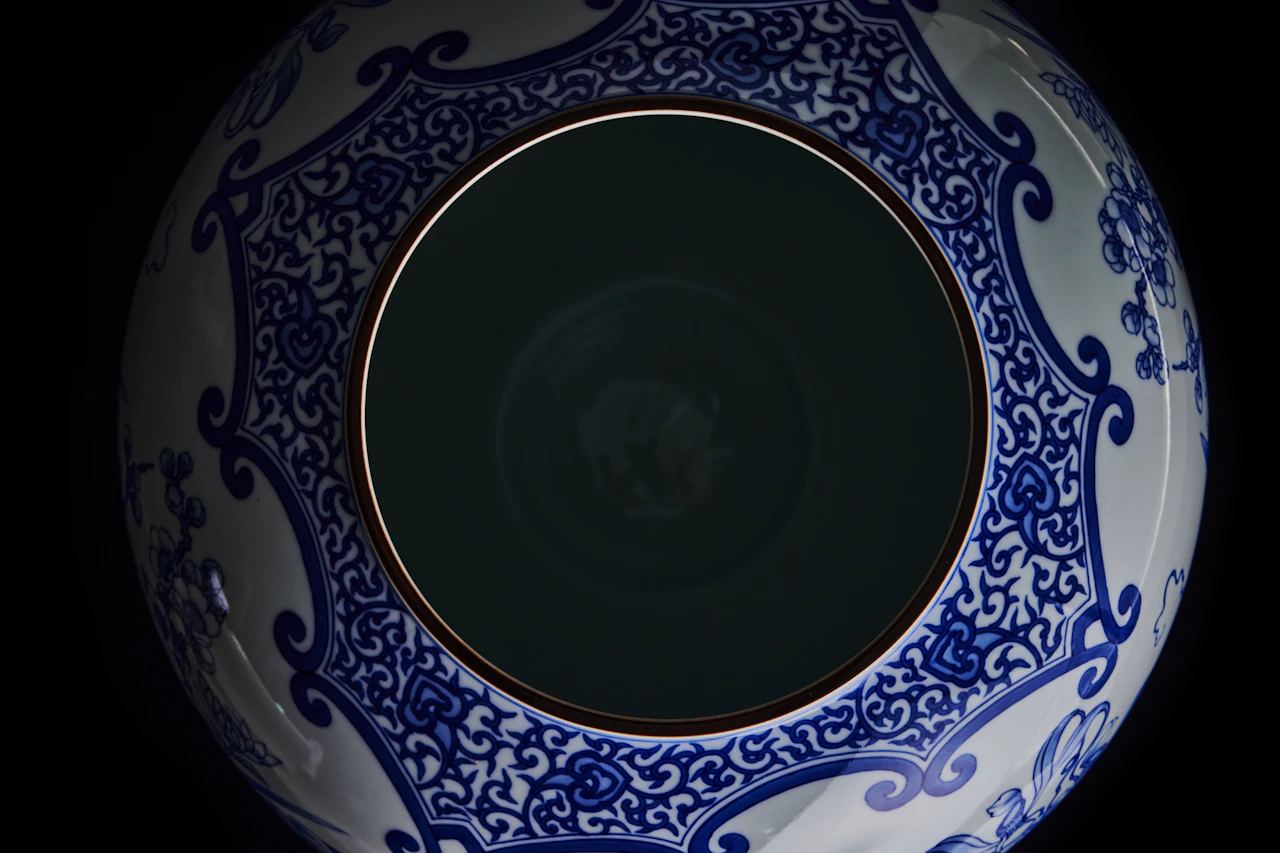
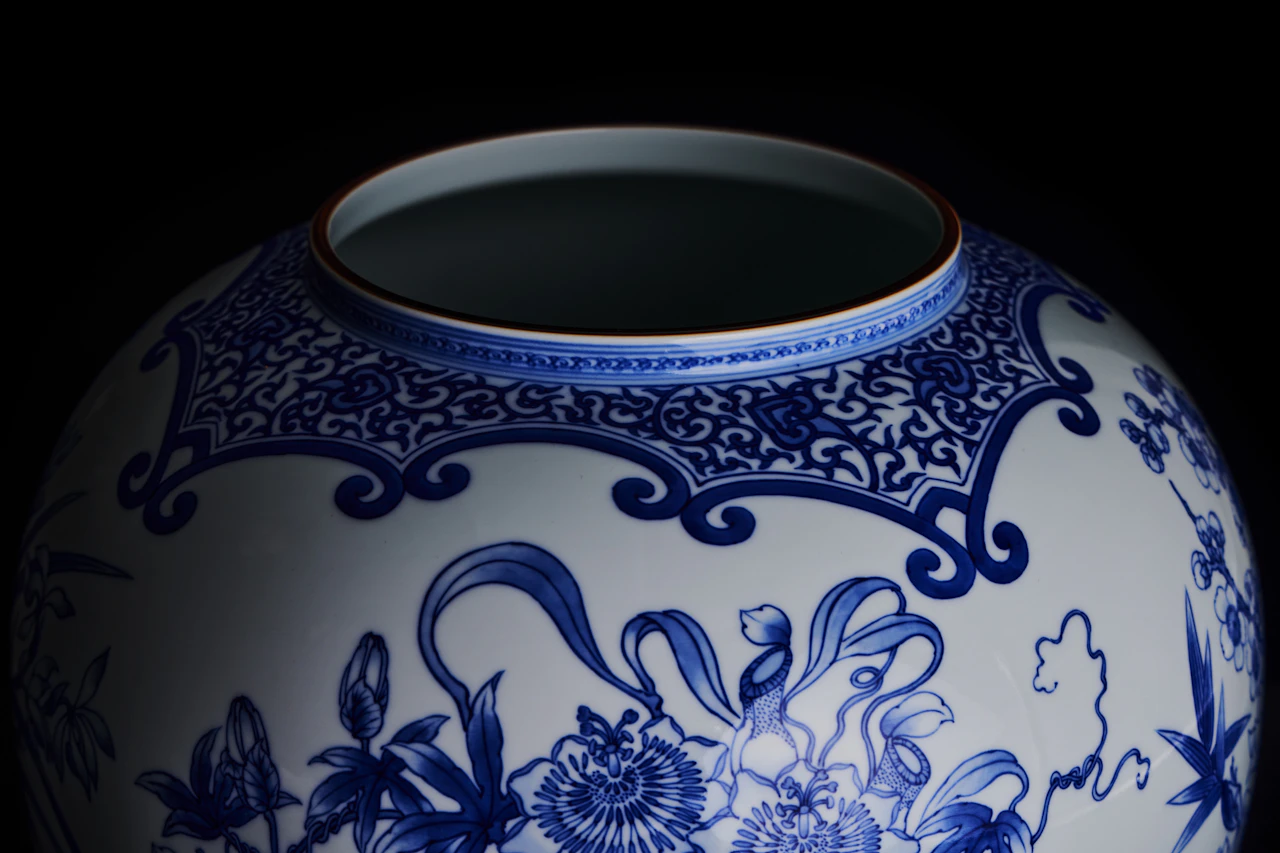
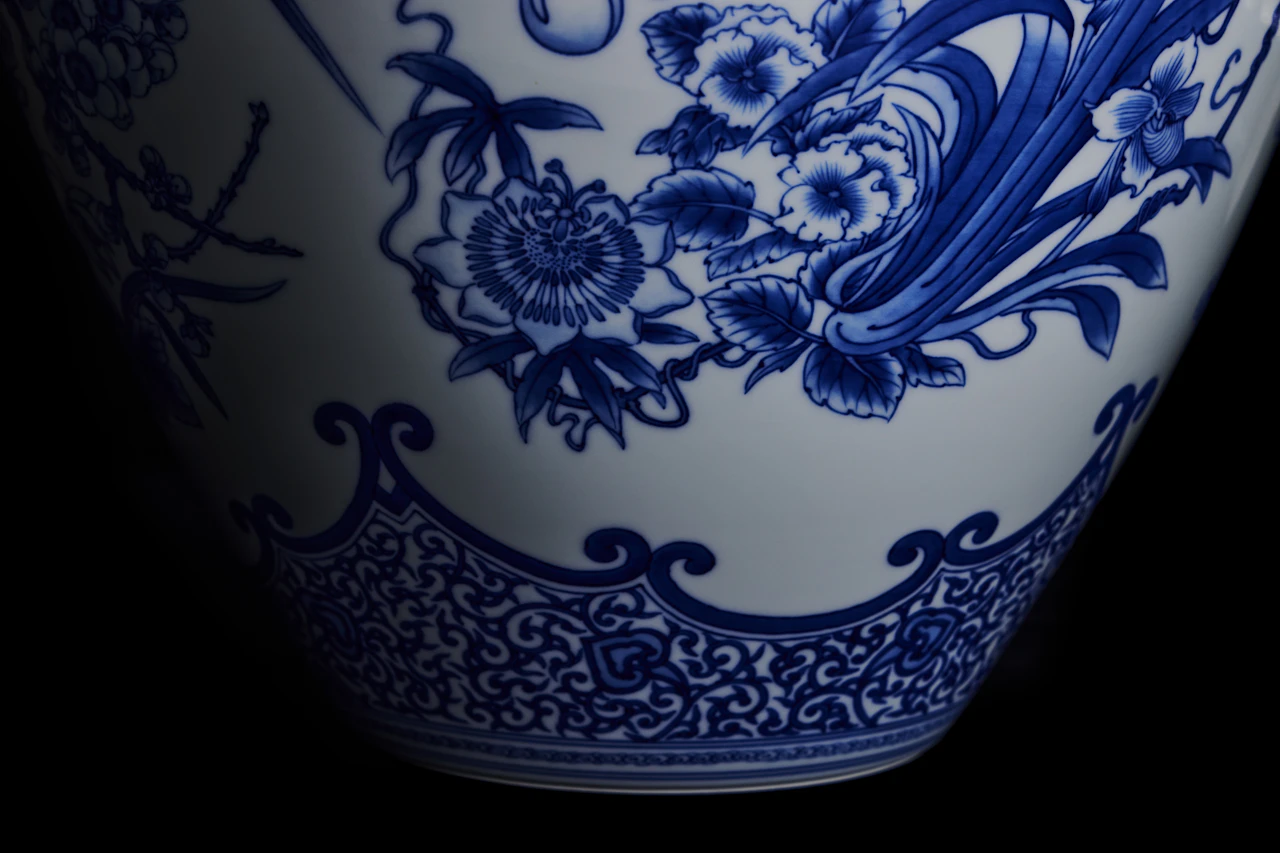
The flower vessel, which can both enhance and detract from the beauty of flowers, has been cherished by people as an art piece since ancient times. Evolving by incorporating various cultures and trends, flower vessels have reached the modern age. Azuma Makoto, an expert in the expression of flowers, has started this project to once again focus on the essential value of "flower vessels" from the perspectives of both flowers and vessels, infusing them with contemporary sensibilities to rediscover their value and pose questions to the world.
For this project, we have partnered with Tsuji Hitachi, the 15th master of Tsuji House, a renowned porcelain kiln in Arita with a 360 year history. The kiln was royally warranted to create porcelain for the royal family and has been producing numerous outstanding pieces for centuries. Among their masterpieces, we have featured the striking large jar in particular, “Four Kunshi (Four Noble Ones)” this time. The classical Oriental motif depicts a plant for each of the four seasons. It was proposed that the 15th master would add motif of four modern plants. “Eight Kunshi” was thus born with four new plants added to the traditional motif.
The four plants traditionally depicted as the "Four Kunshi (Four Noble Ones)" - orchid, bamboo, chrysanthemum, and plum - have been revered as noble plants among all vegetation. Orchids possess a faint fragrance and elegance, bamboo maintains its green and upright nature even in the cold winter, plum exhibits strength and charm by blooming first in the snow of early spring, and chrysanthemum is admired for its vibrant bloom in the cold of late autumn. Due to their noble beauty, these plants have been commonly used as subjects in East Asian paintings since the Song Dynasty in China, symbolizing the four seasons with orchid representing spring, bamboo representing summer, chrysanthemum representing autumn, and plum representing winter.
Azuma selected four modern plants as representatives to advance the concept of "Eight Kunshi," which symbolizes the four seasons. The selected modern plants are trachelospermum, paphiopedilum, pansy, and nepenthes. Trachelospermum exhibits a duality with intertwining vines symbolizing prosperity and beautiful flower shapes resembling a clock marking time. Paphiopedilum is characterized by its pouch-like lip and is considered a modern symbol of hybridization, as enthusiasts worldwide have repeatedly crossbred them, resulting in countless hybrid species. Pansies are beloved worldwide for their strength and charm in poking their heads out from the snow, symbolizing the arrival of spring in modern times. Nepenthes, on the other hand, is a unique plant that combines distinctive shapes with the vitality of being a living organism that captures and derives nutrients from insects, despite being a plant. These eight distinct plants come together, depicted in a single pot, coexisting harmoniously.
Sensitivity and passion of the 15th master resulted in an unprecedented fusion of past and present. The large-scale porcelain “Eight Kunshi” depicts delicate and fleeting flowers in vivid blue. The eight plants coexist in peace, each transcending its own significance. Unique masterpiece is unveiled for only one night here in Arita, the birthplace of Japanese porcelain.
15th master of Tsuji House
During the reign of Japan’s 112th emperor Reigen (1663–1687), the kiln was royally warranted to create porcelain for the royal family under the official name of Tokiwa Daijo. Even though their works remained unknown to the general public, the kiln produced numerous outstanding pieces for the royal family.
花の美しさを活かしも殺しもする花器。古来より美術品としても人々に愛でられてきた花器は、様々な文化、時代性を取り込みながら発展を遂げ現代に至る。花の表現のエキスパートである東は、花、そして器という二つの側面から改めて「花器」の本質的な価値に注目し、そこに現代の感性を付与することで、その価値を再発見し、世の中に問うことを目的として本プロジェクトをスタートさせた。
今回パートナーとなったのは有田にある名窯・辻精磁社。禁裏御用達として天皇・皇族のための器のみを生産し幻の名窯と謳われてきた辻家の名品の中でも、今回我々がフィーチャーしたのは、一際存在感を放つ大壷「四君子」。春夏秋冬それぞれを代表する4つの植物が一つの絵に収められたこの大壷に、「現代の四季」の植物を4つ新たに絵柄に加え、「四君子」ならぬ「八君子」という概念を構築し、表現した。
もともと、古来より「四君子」として描かれてきた蘭、竹、菊、梅の4種類は、草木の中の君子として讃えられた植物である。蘭はほのかな香りと気品を備え、竹は寒い冬にも青々としまっすぐな性質を持ち、梅は早春の雪の中で最初に花を咲かせる強靱さと愛らしさ、菊が晩秋の寒さの中で鮮やかに咲く姿が尊ばれた。それぞれの気品の高い美しさから、中国宋代より東洋画の画題としてもよく用いられ、春は蘭、夏は竹、秋は菊、冬は梅と、四季を表している。
東はこの四季を表す4種に、現代の植物の代表として4種をセレクトし「八君子」の構想を進めた。セレクトした現代の植物は、トケイソウ、パフィオペディラム、パンジー、ウツボカズラの4種である。トケイソウは絡み合う蔦が繁栄を示す一方で、時を刻む時計のような美しい花姿を見せる二面性を持つ。パフィオペディラムは袋状の唇弁を持つ特徴的な花姿で、世界中の愛好家たちが交配を繰り返し、数限りないハイブリッド種が生み出されている現代の象徴のような花でもある。パンジーは現代における春の訪れを告げる花として、雪の中から顔を出す強さと愛らしさで世界中で親しまれ、ウツボカズラはユニークな造形と、植物にも関わらず虫を捕食し栄養とするという生き物としての生々しさを併せ持った植物である。
これら異色とも言える8種類の植物が一堂に会し、一つの壺の中に描かれ、共存する。
東のアイディアと十五代辻常陸(※)の開かれた感性による過去と現代の類を見ない融合。古来からの繊細な筆使いで描かれる奥ゆかしさを湛えた青い花々が、ともに器の中に永遠の命を宿し、躍動する。この世にたった一つの究極の花器が生み出される。
※ 十五代辻常陸
日本の焼き物発祥の地、有田においてもひと際特別な存在として知られる辻家。第百十二代霊元天皇(在位1663年~1687年)の頃より禁裏御用達を仰せつかり、後に「常陸 大掾」という官職を拝命した辻家は、天皇家直属の窯元として、皇族のための器のみを生産する「幻の名窯」と謳われてきた。